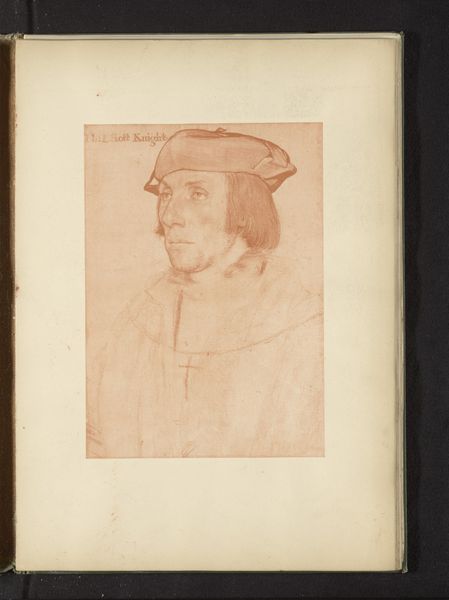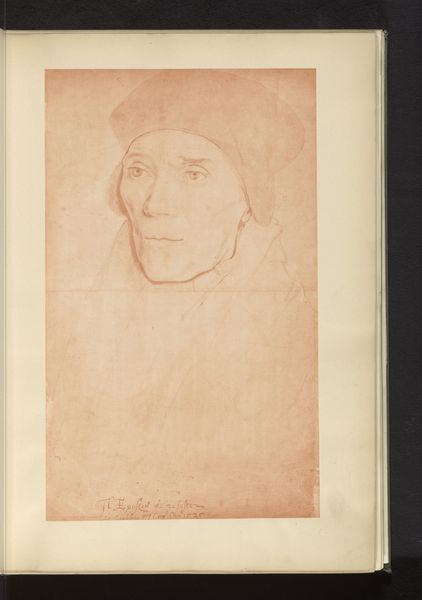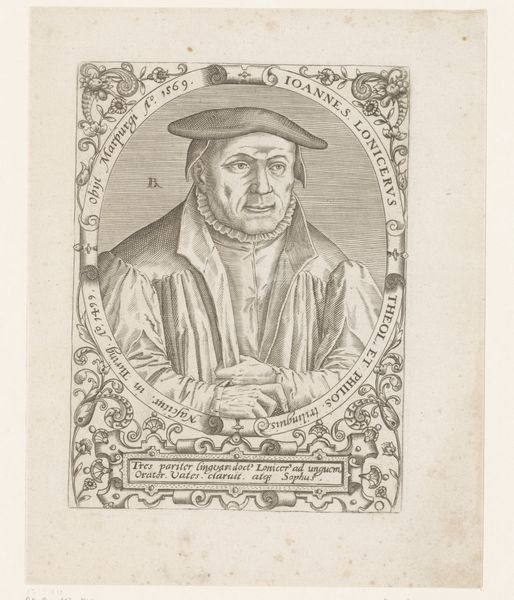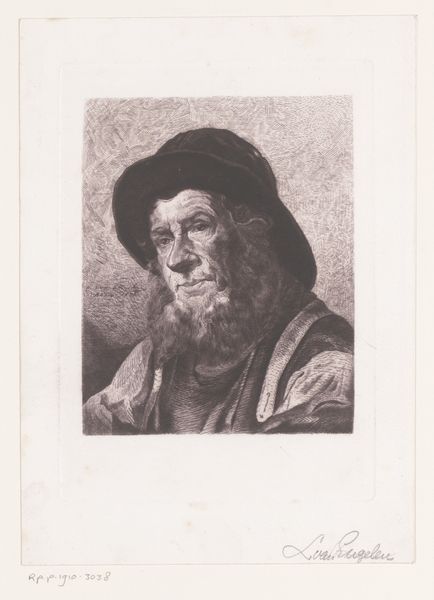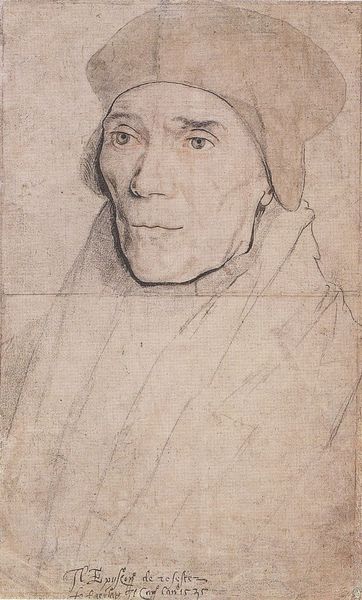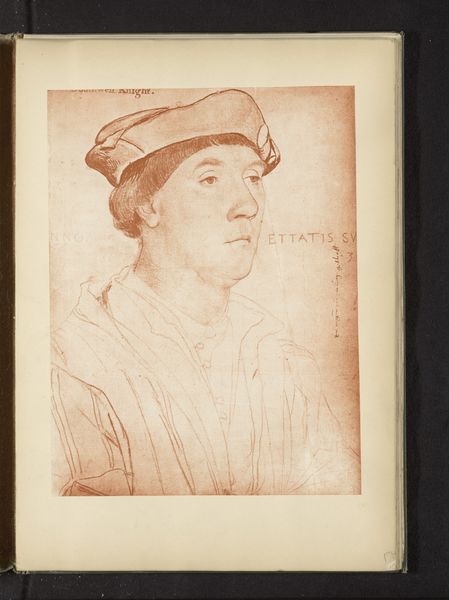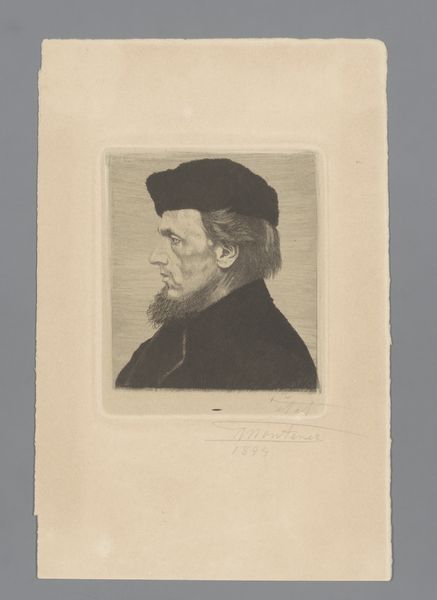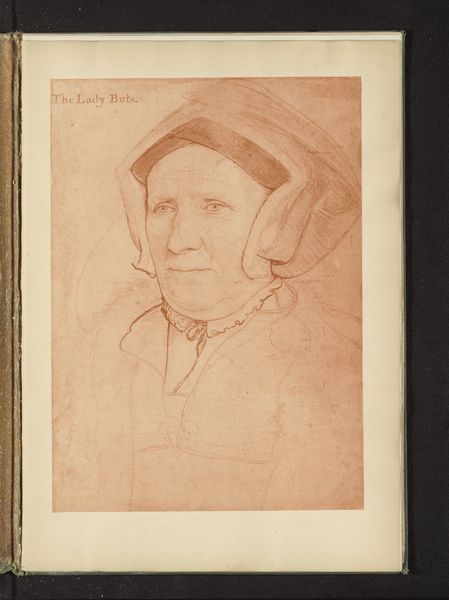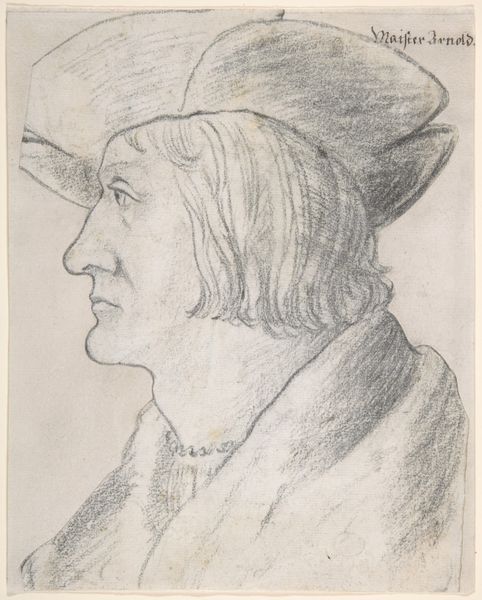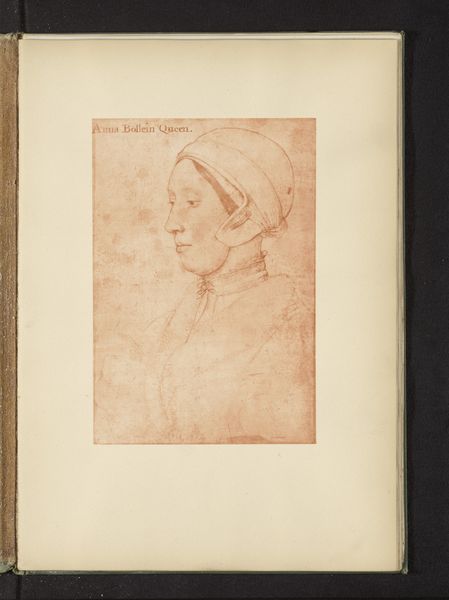
Fotoreproductie van een portret van William Warham door Hans Holbein before 1877
0:00
0:00
anonymous
Rijksmuseum
drawing, pencil, graphite
#
portrait
#
pencil drawn
#
drawing
#
aged paper
#
toned paper
#
light pencil work
#
homemade paper
#
pencil sketch
#
sketch book
#
11_renaissance
#
personal sketchbook
#
sketch
#
pencil
#
intense shading shadow
#
graphite
#
northern-renaissance
#
tonal art
Dimensions: height 403 mm, width 330 mm
Copyright: Rijks Museum: Open Domain
Curator: This intriguing image here at the Rijksmuseum is titled "Fotoreproductie van een portret van William Warham door Hans Holbein." It’s labeled as being from before 1877. What catches your eye initially? Editor: Well, the overall tone is somber. The light pencil work against that toned paper lends an almost ghostly feel. It reminds me of historical documents, like faded letters with secrets held within. Curator: Indeed. Let's delve into that “toned paper” aspect. Someone, perhaps in the throes of artistic practice, elected a warm ground here. Do we assume they salvaged aged paper or deliberately manufactured it? Consider also: the cost of labor implied to realize a simple graphite image such as this in the 19th century! Editor: Right. Material reality. Now I want to zoom in on the sitter himself. William Warham. What about the hat? It's less elaborate than you might expect for an Archbishop, right? Its subdued presence makes me wonder what this choice would have symbolized at the time of its original creation. Curator: Exactly. He served as the Archbishop of Canterbury. Now, even though this is a photomechanical reproduction made fairly late, it shows that even in this industrial process, Holbein’s portrait still held cultural value worth replicating and disseminating. Editor: Which loops us back to Warham himself! What was so significant about him that his image persists? What qualities were artists hoping to distill through replicating Holbein's rendering? Curator: Consider the original circumstances under which the original sketch was made and how that contrasts against this later photomechanical version: these reproductive technologies were revolutionary because they rendered fine drawing into commercial product! It served the burgeoning market of reproductions and, consequently, impacted the perception of labor in the visual arts. Editor: It truly encapsulates how an image can echo through time. Its very existence speaks to the power of symbols to transcend not just decades, but technologies too. Curator: Absolutely. Reflecting on it, examining this image makes us consider our relationship to process as well as those reproduced historical figures. Editor: Precisely. These portraits are far more than just likenesses, right? They really are material and cultural artifacts reflecting social and ideological currents that are constantly moving and shifting.
Comments
No comments
Be the first to comment and join the conversation on the ultimate creative platform.

